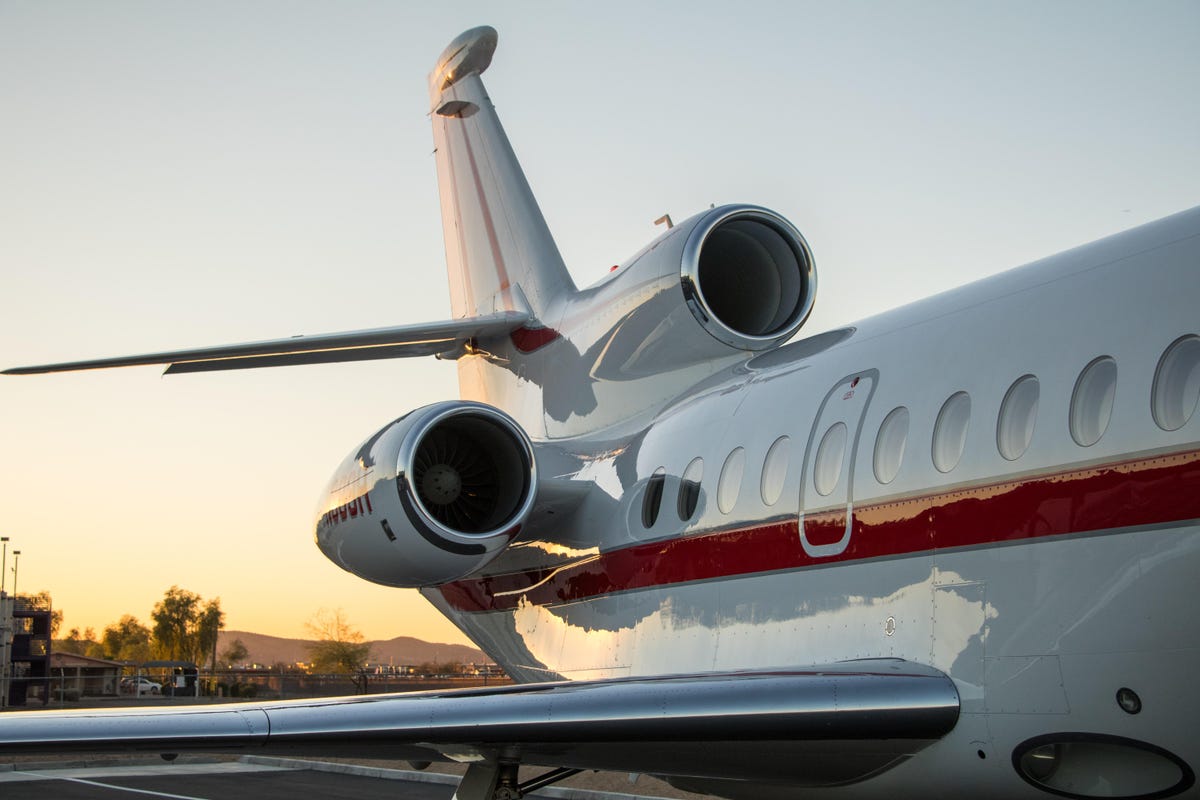Step inside the flight deck of the future
This plane is full of experimental technology to help pilots see what they might otherwise miss.

Climb aboard the Falcon
This plane is a Dassault Falcon, one of several planes used by Honeywell to test out new aviation technology.
The Falcon's flight deck
The Falcon is home to several experimental displays, including one that shows a 3D airport representation so pilots can safely navigate between gates and taxiways.
No jetway needed
Even the stairs on the aircraft announce the plane's experimental technology.
Preparing for takeoff
Lead test pilot Bryan Weaver heads up our flight on the Falcon. He's taxiing the plane down the runway as we take off at Phoenix's Deer Valley Airport. Directly in front of him is a synthetic vision display. It shows a 3D rendering of the world outside the cockpit, with obstacles, terrain and runway information on one screen.
Helping pilots see what they might miss
Weaver checks displays in the cockpit during the flight. He tells me that synthetic vision displays can help pilots with situational awareness. Compared to traditional displays, synthetic vision displays give pilots a better a better sense of where the plane is in relation to the environment, he says.
In flight
Even though it's almost completely dark outside the cockpit, synthetic vision displays (shown here on the left and right) make it look like we're flying on a bright, sunny day.
Blue-over-brown display
This blue-over-brown display is something that today's pilots are used to seeing, but it doesn't give them the same level of detail as synthetic vision.
Infrared overlays
This is an infrared image superimposed over a traditional flight display. The blue-over-brown view underneath the IR image (as seen on the previous slide) is normally all pilots see. With infrared, pilots get a clear view of what the environment looks like outside the cockpit, even if there's low visibility due to bad weather or they're flying at night.
Seeing is believing
The infrared camera is mounted at the front of the plane.
Synthetic vision
Honeywell's version of synthetic vision, called SmartView, also guides pilots onto the runway with helpful symbology.
The airport map
One of the displays in the Falcon shows the plane's position in the airport.
Dark outside, bright inside
Another example of how these new displays can help pilots see everything outside the cockpit even though it's completely dark.
Flight simulator
Honeywell's flight simulator is used to collect pilot feedback on new displays, such as synthetic vision. Other technology under the hood includes a feature that lets pilots see where they need to go once they're on the runway, kind of like GPS in a car. They enter a gate coordinate on a tablet, then the taxi path is displayed on screen in the cockpit.
Landing
A commercial airliner comes in to land near Honeywell's facilities in Phoenix, Arizona.

